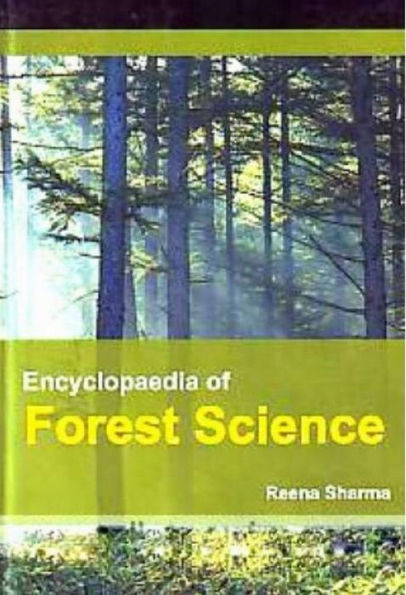Encyclopaedia of Forest Science
The word forest comes from Middle English forest, from Old French forest “forest, vast expanse covered by trees”; first introduced in English as the word for wild land set aside for hunting without the necessity in definition for the existence of trees. Possibly a borrowing of the Medieval Latin word foresta “open wood”, foresta was first used by Carolingian scribes in the Capitularies of Charlemagne to refer specifically to the king's royal hunting grounds. The term was not endemic to Romance languages, and cognates in Romance languages, such as Italian foresta, Spanish and Portuguese floresta, etc. are all ultimately borrowings of the French word. The tropical and subtropical dry broadleaf forest biome, also known as tropical dry forest, is located at tropical and subtropical latitudes. Though these forests occur in climates that are warm year-round, and may receive several hundred centimetres of rain per year, they have long dry seasons which last several months and vary with geographic location. These seasonal droughts have great impact on all living things in the forest. Deciduous trees predominate in most of these forests, and during the drought a leafless period occurs, which varies with species type. Because trees lose moisture through their leaves, the shedding of leaves allows trees such as teak and mountain ebony to conserve water during dry periods. This encyclopaedia offers a comprehensive description of the applications of various fields in this subject. The encyclopaedia will be appropriate as a guide for students.
"1143377542"
Encyclopaedia of Forest Science
The word forest comes from Middle English forest, from Old French forest “forest, vast expanse covered by trees”; first introduced in English as the word for wild land set aside for hunting without the necessity in definition for the existence of trees. Possibly a borrowing of the Medieval Latin word foresta “open wood”, foresta was first used by Carolingian scribes in the Capitularies of Charlemagne to refer specifically to the king's royal hunting grounds. The term was not endemic to Romance languages, and cognates in Romance languages, such as Italian foresta, Spanish and Portuguese floresta, etc. are all ultimately borrowings of the French word. The tropical and subtropical dry broadleaf forest biome, also known as tropical dry forest, is located at tropical and subtropical latitudes. Though these forests occur in climates that are warm year-round, and may receive several hundred centimetres of rain per year, they have long dry seasons which last several months and vary with geographic location. These seasonal droughts have great impact on all living things in the forest. Deciduous trees predominate in most of these forests, and during the drought a leafless period occurs, which varies with species type. Because trees lose moisture through their leaves, the shedding of leaves allows trees such as teak and mountain ebony to conserve water during dry periods. This encyclopaedia offers a comprehensive description of the applications of various fields in this subject. The encyclopaedia will be appropriate as a guide for students.
224.99
In Stock
5
1

Encyclopaedia of Forest Science
308
Encyclopaedia of Forest Science
308eBook
$224.99
$299.99
Save 25%
Current price is $224.99, Original price is $299.99. You Save 25%.
Related collections and offers
224.99
In Stock

Product Details
| ISBN-13: | 9789354103643 |
|---|---|
| Publisher: | Arts & Science Academic Publishing |
| Publication date: | 06/30/2013 |
| Sold by: | Barnes & Noble |
| Format: | eBook |
| Pages: | 308 |
| File size: | 7 MB |
About the Author
From the B&N Reads Blog
